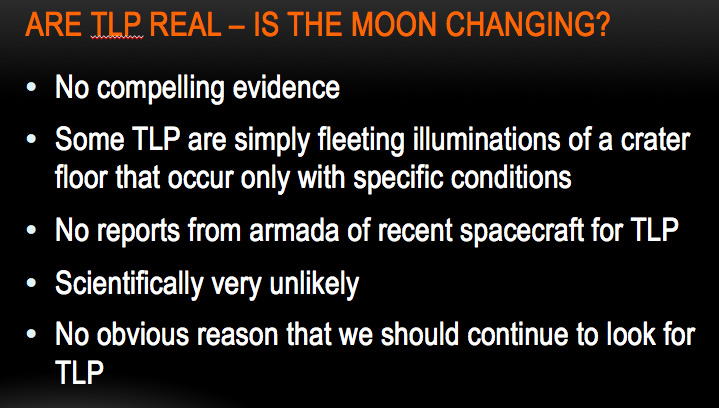Difference between revisions of "February 5, 2011"
| Line 3: | Line 3: | ||
<!-- ws:start:WikiTextHeadingRule:0:<h1> --> | <!-- ws:start:WikiTextHeadingRule:0:<h1> --> | ||
<!-- ws:start:WikiTextLocalImageRule:6:<img src="/file/view/LPOD-Feb5.jpg/198840002/LPOD-Feb5.jpg" alt="" title="" /> -->[[File:LPOD-Feb5.jpg|LPOD-Feb5.jpg]]<!-- ws:end:WikiTextLocalImageRule:6 --><br /> | <!-- ws:start:WikiTextLocalImageRule:6:<img src="/file/view/LPOD-Feb5.jpg/198840002/LPOD-Feb5.jpg" alt="" title="" /> -->[[File:LPOD-Feb5.jpg|LPOD-Feb5.jpg]]<!-- ws:end:WikiTextLocalImageRule:6 --><br /> | ||
| − | <em>image from [mailto:tychocrater@yahoo.com | + | <em>image from [mailto:tychocrater@yahoo.com Chuck Wood]</em><br /> |
<br /> | <br /> | ||
Transient Lunar Phenomena were the topic of my talk at [/December+9%2C+2010 Astrofest] on Friday. As I write this I worry about using the word "were" in the previous sentence because that is plural and I find no evidence for even one compelling TLP report. The image above is from one of my conclusion slides. It is remarkable that TLPs have not been documented in the millions of images from professional ground-based programs (Kuiper Atlas, Pic du Midi images in early 60s), or in spacecraft images taken by everything from Lunar Orbiter through Clementine, through - presumably - Kaguya and LRO. TLP reports come exclusively from visual observers, many in the past using small achromatic refractors. I am ready to close the book on TLP, let them rest in peace (RIP). When I think of the tens of thousands of observer's hours spent looking for TLPs, and then remember that all of these lunar observers failed to discover impact basins, the largest and most significant features on the Moon, I bemoan our fascination by the improbable and unlikely. <br /> | Transient Lunar Phenomena were the topic of my talk at [/December+9%2C+2010 Astrofest] on Friday. As I write this I worry about using the word "were" in the previous sentence because that is plural and I find no evidence for even one compelling TLP report. The image above is from one of my conclusion slides. It is remarkable that TLPs have not been documented in the millions of images from professional ground-based programs (Kuiper Atlas, Pic du Midi images in early 60s), or in spacecraft images taken by everything from Lunar Orbiter through Clementine, through - presumably - Kaguya and LRO. TLP reports come exclusively from visual observers, many in the past using small achromatic refractors. I am ready to close the book on TLP, let them rest in peace (RIP). When I think of the tens of thousands of observer's hours spent looking for TLPs, and then remember that all of these lunar observers failed to discover impact basins, the largest and most significant features on the Moon, I bemoan our fascination by the improbable and unlikely. <br /> | ||
<br /> | <br /> | ||
| − | <em>[mailto:tychocrater@yahoo.com | + | <em>[mailto:tychocrater@yahoo.com Chuck Wood]</em><br /> |
<br /> | <br /> | ||
<hr /> | <hr /> | ||
Revision as of 17:30, 11 January 2015
TLP Rip

image from Chuck Wood
Transient Lunar Phenomena were the topic of my talk at [/December+9%2C+2010 Astrofest] on Friday. As I write this I worry about using the word "were" in the previous sentence because that is plural and I find no evidence for even one compelling TLP report. The image above is from one of my conclusion slides. It is remarkable that TLPs have not been documented in the millions of images from professional ground-based programs (Kuiper Atlas, Pic du Midi images in early 60s), or in spacecraft images taken by everything from Lunar Orbiter through Clementine, through - presumably - Kaguya and LRO. TLP reports come exclusively from visual observers, many in the past using small achromatic refractors. I am ready to close the book on TLP, let them rest in peace (RIP). When I think of the tens of thousands of observer's hours spent looking for TLPs, and then remember that all of these lunar observers failed to discover impact basins, the largest and most significant features on the Moon, I bemoan our fascination by the improbable and unlikely.
Chuck Wood



